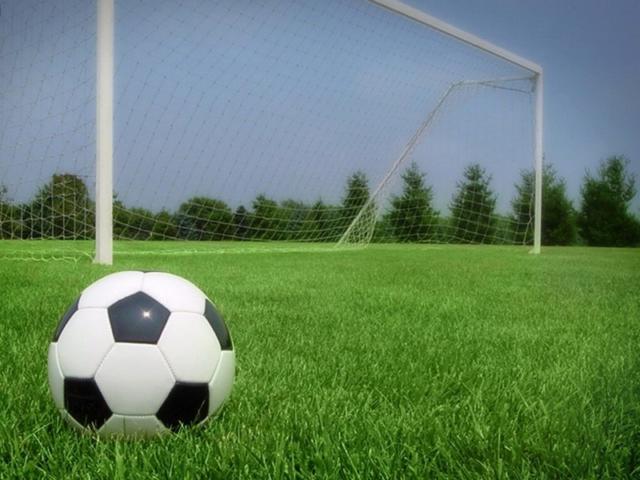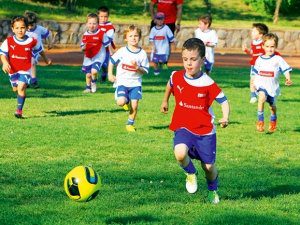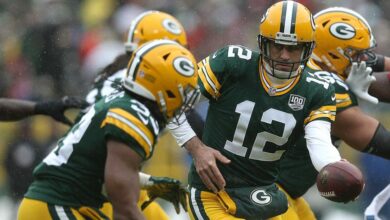
How to learn to play football
The popularity of football in the world has been at a consistently high level for the past half century. Each football championship (Mundial) turns into a world holiday that attracts billions of viewers from the screens around the globe. Our country is no exception – football in Russia is loved and appreciated.

Preschoolers, adolescents, young people and adults want to learn how to play football – some with the dream of sports achievements, others – for health and fitness purposes. This article will introduce you to the history and features of this popular game and tell you how to learn how to play football.
Contents
Brief history and general information
Football is the world’s # 1 sports game. Tens of millions of people play football (30% of them are women). According to the official definition, football is a team sports discipline in which the goal is to kick the ball into the opponent’s goal with the feet or other parts of the body besides the arms. Hundreds of books have been written about football, many feature films and documentaries have been shot; in some countries (for example, in South America) this sport is a religion for millions of people.
The history of football goes back to antiquity – a similar game was played in Ancient China, the Roman Empire, in Sparta. Football, which is played today, appeared in England in the 19th century and was played mainly by college students. In the middle of the 19th century, uniform football rules were adopted, and standard field and goal sizes were introduced.
In 1871, the world’s first official football tournament took place. Currently, football tournaments are held in almost all countries of the world – from Australia to Canada. There are more than 2 million teams (clubs) in the world. There has been a progressive increase in the popularity of football among women. People love not only to play themselves, but also to watch how they play football: the 2014 World Cup in Brazil was watched by more than 3 billion people – half of the planet.
The benefits of playing football and the possible harm
Before figuring out how to learn how to play football well, a few words should be said about the benefits of this sport and the possible harm. We are not talking about a professional game, but about an amateur one: the “pros” have a completely different approach to the training and game process, which includes increased risks of injuries and injuries.
Let’s list the points, than football is useful from a health point of view:
- During the game, almost all muscle groups are involved, which maintains the body in a constant tone;
- Long-term training and games contribute to the development of endurance;
- Energy consumption in football is much higher than during static exercises, which helps to stabilize weight and eliminate body fat;
- Football develops coordination and a sense of balance;
- The game encourages creative thinking, since winning football is impossible without tactics and strategy;
- Strengthening the myocardium reduces the risk of heart disease;
- During training and games, the blood supply to organs and tissues improves, and “harmful” cholesterol is eliminated from the vessels.
In addition to the above, football evokes positive emotions and also expands the circle of friends. You can play this game at any time of the year (you can train indoors in winter). The health benefits of football also lie in the formation of positive character traits – will, endurance, joy in achieving a result.
It is impossible not to say about the traumatic nature of this sport. Football is not as dangerous as hockey or boxing, but the likelihood of injury is higher than in individual sports. Football players should take care of their joints and legs in general: both training and games have an increased risk of injury, therefore, all football players (especially beginners) should take full-fledged protective measures.
Who is contraindicated to play football
Medical contraindications for playing football can be divided into absolute and relative. Absolute – those in which playing football is categorically contraindicated. With relative contraindications, it all depends on the stage of the disease and the degree of symptoms.
It is categorically impossible to play football if you have:
- Bronchial asthma;
- Severe back problems;
- Myopia;
- Serious heart problems;
- Diagnosed mental illness.
Chronic diseases of internal organs are considered relative contraindications. Football training should be started no earlier than from 6 years old – up to this age, you can carry out general physical training of a child from 3-4 years old.
Features of the training process

A beginner player will need football paraphernalia – leggings, boots and a football uniform. All of these things can be purchased at any sports store – the most economical and simple options are suitable for a start. In addition to uniforms, you will need a soccer ball, which can also be purchased at a sporting goods store.
The main thing in the training process is to develop a sense of the ball in football: the player’s ability to subtly feel the movements of the main football projectile and skillfully control it. To do this, you need to spend a lot of time on individual exercises with the ball.
Let’s list other skills and abilities of a football player:
- Dribbling – the ability to control the ball while running. In this skill, the main thing is to touch the ball not too hard so as not to let it go far, but not too weakly – otherwise it will not roll at the required speed. Running fast with the ball is one of the main qualities of a good football player.
- The ability to give the transfer. Passing is the foundation of football as a team sports discipline. First, you need to learn how to make a pass with the inside of the foot – it turns out smoother and more accurate. Having mastered the low pass, you can proceed to the technique of “hanging” on your partner. Learn to give a pass “on the move” – to give the pass not to where the player is now, but to where he will be in a few seconds.
- The ability to hit the goal. The main thing in football is goals, without which there is no result. From close range it is better to hit softly and lightly with the inner side of the foot, but more often you have to hit from a distance with the central part of the foot (with the laces on the boots) – hard and aimed, taking into account the goalkeeper’s position.
- Movement without the ball. During 90 minutes of the match, a player runs an average of 10 km – most of the time he moves without the ball. The ability to open up to pass and defend – qualities, without which you cannot become a good football player.
- Defensive play. If you play on defense, learn to take the right position: in case of an attack, you should position yourself between the ball and your own goal.
- Ability to take the ball: a football player must be able to receive and handle a ball that hits him at any height. This skill can be practiced with a partner or with a wall.
- Ability to play with your head. No need to hit with the top of your head: learn to hit the ball with your hairline. To receive the top ball, take your body to the side, not your head.
- The skill of fulfilling standards: For experienced players, even an ordinary free kick or corner kick turns into a formidable weapon. From a corner, you need to serve the ball so that the players of your team can hit their heads into the opponent’s goal.
Knowledge of football theory and the rules of the game is a must, but you should not go too deep into the nuances at the initial stage. Difficult enough for beginners to understand is the situation Offside or offside: in order to understand exactly the meaning of this term, it is better to watch the corresponding video materials.
Practical tips for beginners
Football is a contact sport: it consists of collisions, wrestling and ball tackling. Both on the professional field and indoors there are falls, kicks on the legs, hard joints. Avoiding injuries is difficult, but you can prepare well for them.
Learn to group when falling, avoid direct collisions, support your body and remove your legs. However, bruises, abrasions and bruises are indispensable in football: such injuries should not distract you from the game and interfere with training. However, if painful sensations persist after training, it is better to visit a doctor in time: it is better to treat serious injuries in the opening.
Football is a courageous and at the same time intellectual game. Sometimes this sport is called “contact chess”: in order to win, you need to run, think and make decisions equally quickly and efficiently.





